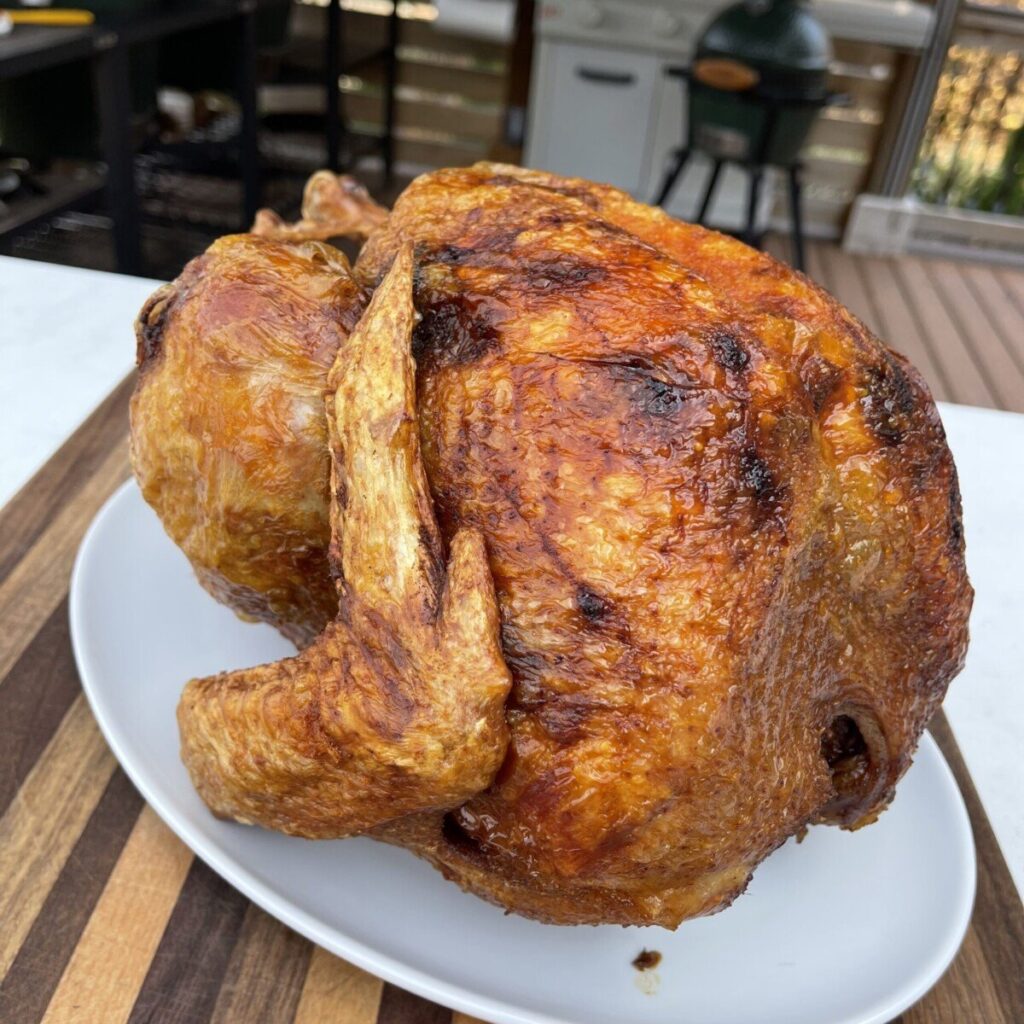
Deep-fried turkey has taken the culinary world by storm, offering a tantalizing alternative to traditional oven-roasted methods. This cooking technique involves submerging a whole turkey in hot oil, resulting in a crispy exterior and succulent interior that many food enthusiasts swear by. The allure of deep-fried turkey lies in its ability to deliver an unparalleled sensory experience, with the satisfying crunch of the skin giving way to tender, flavorful meat.
This article delves into the world of deep-fried turkey, exploring its advantages over oven-roasting, the science behind its crispy skin and juicy meat, and the unique flavor profile it imparts. We’ll also examine the benefits of deep frying a turkey and provide insights for achieving culinary perfection with this popular method.
Deep-Fried Turkey vs. Oven-Roasted
While both deep-fried and oven-roasted turkeys can be delicious, there are distinct differences in their preparation and final results. Oven roasting involves slow cooking at moderate temperatures, resulting in a tender bird but often lacking the crispy skin that many crave. Deep frying, on the other hand, utilizes high heat to cook the turkey rapidly, creating a golden-brown crust and ensuring even cooking throughout.
The rapid cooking time of deep frying also helps retain moisture within the turkey, leading to juicier meat compared to oven roasting. This is because the high temperature seals in the juices as the bird cooks, preventing them from escaping during the process. Furthermore, deep frying allows for a more consistent cooking experience, as the hot oil surrounds the turkey evenly, eliminating any cold spots that can occur with oven roasting.
Crispy Skin and Juicy Meat

The magic of deep-fried turkey lies in its ability to achieve both crispy skin and juicy meat simultaneously. The high heat of the oil rapidly cooks the outer layer of the turkey, creating a golden-brown crust that shatters with every bite. This crispiness is achieved due to the Maillard reaction, a chemical process that occurs when proteins and sugars react at high temperatures, producing flavorful compounds responsible for the characteristic browning and aroma.
The juicy meat results from the rapid cooking time and the sealing of juices within the turkey. The hot oil creates a barrier that prevents moisture loss, ensuring that the meat remains tender and succulent throughout. Additionally, brining the turkey before frying helps to further enhance its juiciness by infusing it with salt and water, which penetrate the muscle fibers and retain moisture during cooking.
Achieving Perfect Crispiness
To achieve optimal crispiness, several factors need to be considered:
- Oil Temperature: Maintaining a consistent oil temperature of 350°F (175°C) is crucial for even cooking and achieving that golden-brown crust.
- Turkey Preparation: Patting the turkey dry before frying helps to promote browning and prevent steam buildup in the oil.
- Cooking Time: Deep-frying a turkey takes less time than oven roasting, typically around 3-4 minutes per pound.
Flavor Profile of Deep-Fried Turkey
Does deep fried turkey taste better? The answer is subjective, but many argue that deep-fried turkey possesses a unique flavor profile that sets it apart from oven-roasted counterparts. The high heat of the oil infuses the turkey with a subtle smokiness and enhances its natural flavors.
The crispy skin adds another dimension to the taste experience, providing a satisfying crunch and contrasting texture with the tender meat. Some enthusiasts also claim that deep frying brings out a richer, more savory flavor in the turkey, possibly due to the Maillard reaction occurring during cooking.
Benefits of Deep Frying a Turkey

Deep-frying a turkey offers several advantages over traditional oven roasting:
- Faster Cooking Time: Deep frying cooks the turkey significantly faster, allowing for a quicker meal preparation process.
- Even Cooking: The hot oil surrounds the turkey evenly, ensuring that it cooks consistently throughout and eliminating cold spots.
- Enhanced Flavor: Deep frying infuses the turkey with a unique smoky flavor and enhances its natural taste.
- Crispy Skin: The high heat of the oil creates a golden-brown, shatteringly crispy skin that many find irresistible.
Conclusion
Deep-fried turkey has become a beloved alternative to oven roasting, offering a tantalizing combination of crispy skin and juicy meat. Its unique flavor profile, faster cooking time, and even cooking results have made it a popular choice for holiday gatherings and special occasions. While deep frying requires careful attention to safety precautions, the rewards are well worth the effort for those seeking an exceptional culinary experience.
